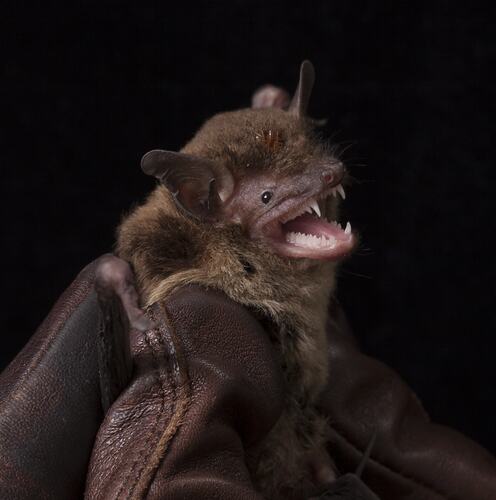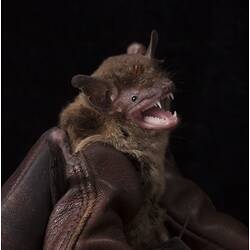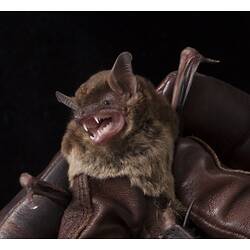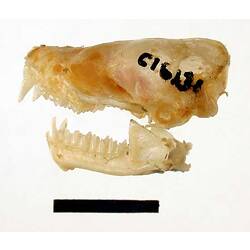General Description
Uniform dark reddish brown fur on back. Paler, grey brown fur on belly. Ears long and narrow towards the tip. Head and body about 60 mm long. Two pairs of incisors in upper jaw, second in each pair is extremely small.
Biology
Feeds on insects, mostly beetles. Hunts high within the forest and has been recorded to roam up to 12 km in a night. Roosting colonies are often dominated by one sex and southern populations hibernate over winter. Most young are born in December.
Distribution
South-eastern Australia; coastal from southern Queensland through to eastern South Australia. Throughout Tasmania.
Habitat
Wet sclerophyll forest and woodlands.
More Information
-
Animal Type
-
Animal SubType
-
Brief Id
Dark red-brown fur on back, paler grey-brown below, ears long and narrower at tips, two pairs of incisors in upper jaw.
-
Maximum Size
70 cm
-
Habitats
-
Diet
Carnivore
-
Diet Categories
Insects
-
Endemicity
-
Conservation Statuses
CITES: Not listed, EPBC Act 1999: Not listed, FFG Threatened List: Not listed, IUCN Red List: Vulnerable
-
Taxon Name
-
Scientific Author
Gould, 1858
-
Common Name
Eastern False Pipistrelle
-
Kingdom
-
Phylum
-
Subphylum
-
Class
-
Order
-
Family
-
Subfamily
-
Genus
-
Species Name
tasmaniensis



